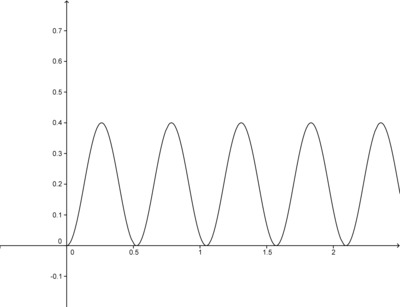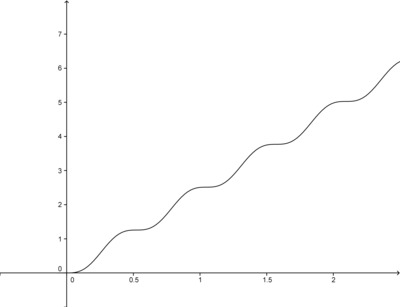As the Wheel Turns
A wheel of radius 0.2 meters begins to move along a flat surface so that the center of the wheel moves forward at a constant speed of 2.4 meters per second. At the moment the wheel begins to turn, a marked point $P$ on the wheel is touching the flat surface.

- Write an algebraic expression for the function $y$ that gives the height (in meters) of the point $P$, measured from the flat surface, as a function of $t$, the number of seconds after the wheel begins moving.
- Sketch a graph of the function $y$ for $t>0$. What do you notice about the graph? Explain your observations in terms of the real-world context given in this problem.
- We define the horizontal position of the point $P$ to be the number of meters the point has traveled forward from its starting position, disregarding any vertical movement the point has made. Write an algebraic expression for the function $x$ that gives the horizontal position (in meters) of the point $P$ as a function of $t$, the number of seconds after the wheel begins moving.
- Sketch a graph of the function $x$ for $t>0.$ Is there a time when the point $P$ is moving backwards? Use your graph to justify your answer.



